The Atlantic coast of Florida was strategically important because the Gulf Stream, the best shipping route to carry products from the New World back to Europe, flows right by Florida. The French established the first fort there, but the Spanish, under Don Pedro Menendez de Aviles, ousted the French and took control of Florida. British pirates were the new threat, and with the establishment of a settlement at Charleston, the English were encroaching on the Spanish space, so they built a fort to protect St. Augustine. Begun in 1672, Castillo de San Marcos was completed in 1695. In 1702, the English burned all of St. Augustine, but even a 50-day siege failed to take the fort.
The Spanish held Florida until 1763 and then, in the treaty that ended the French and Indian War, traded Florida to Great Britain for Cuba. With the end of the Revolutionary War, the Treaty of Paris gave Florida back to Spain, which then gave it to the United States in 1821. Finally, in 1935 it became a national monument.
The walls of the fort were constructed of Coquina, a sedimentary rock mixed with small shells that was used because it was readily available but turned out to have the happy property that cannonballs bored into the walls but didn’t break them.
Here’s the bridge over the moat to the inner entrance of the fort.
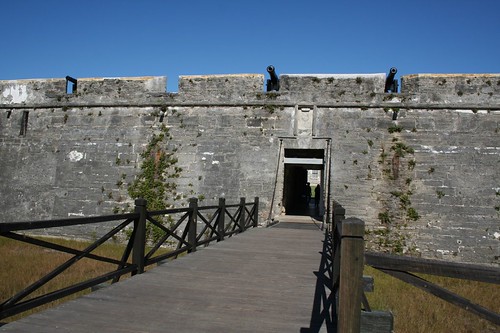
The top of the fort afforded nice views of the bay.
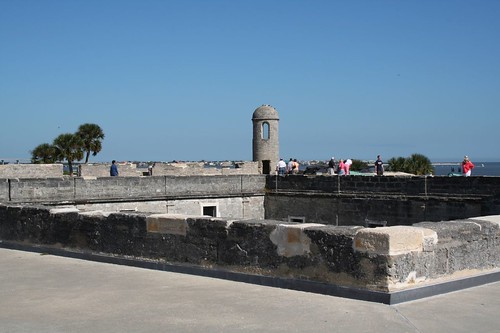
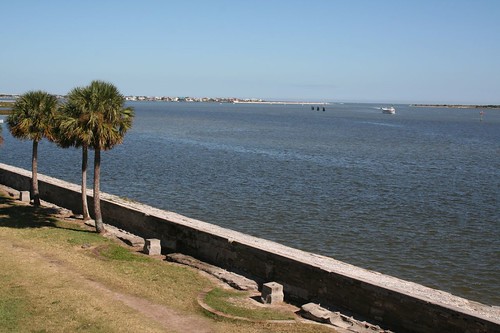
Some of the artillery atop the fort was museum-quality, including this mortar.
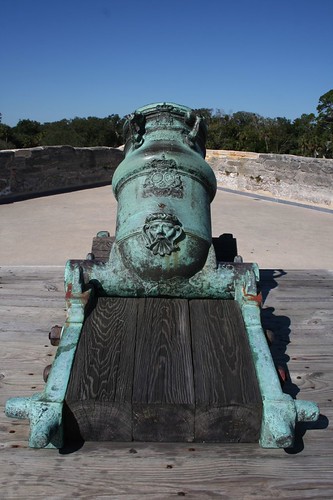
After touring the fort, we walked around the old center of St. Augustine. It turned out to be disappointingly touristy, but it did have some nice sights, including this steeple.
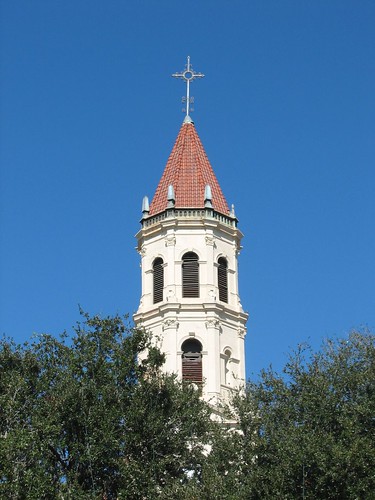
Here’s the view looking down George Street, the main pedestrian street in St. Augustine.
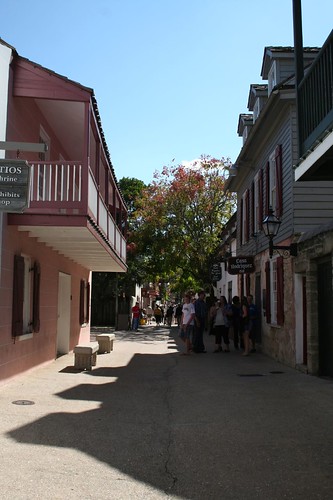
And the self-proclaimed oldest wooden schoolhouse in the U.S.
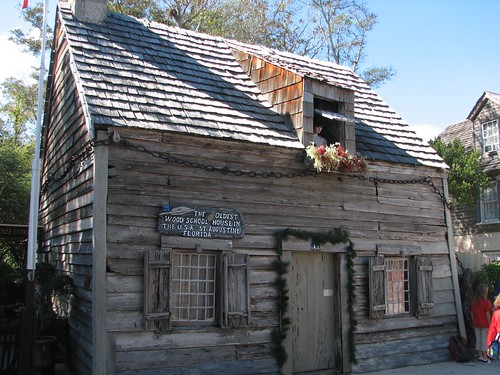
We left St. Augustine in the early afternoon and discovered in our guidebook that one of Anheuser-Busch’s 12 breweries is in Jacksonville, just an hour north of St. Augustine! We’re not particular fans of Budweiser beer, but we’ve done several microbrewery tours and thought a tour of an industrial brewery would be interesting for comparison.
At the brewery tours are offered every half hour, and we arrived just a few minutes before the next tour was to start – just enough time to admire the wide variety of Anheuser-Busch beers on display.
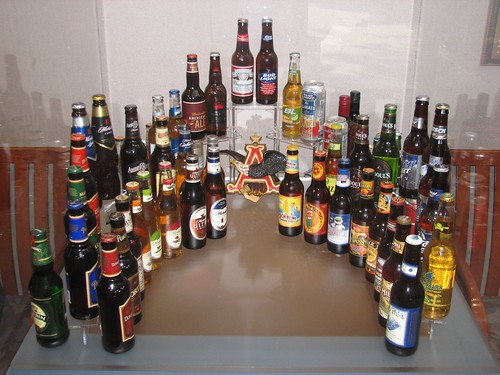
As it turned out, we were the only people for our timeslot, so we got our own private tour. We got to learn about the history of Anheuser-Busch, in which the money came from Mr. Anheuser and the brewing and marketing expertise came from generation after generation of Busches, starting with Adolphus Busch, who married Mr. Anheuser’s daughter and applied many innovations that allowed for selling Budweiser nationwide, including pasteurization and refrigeration on railroad cars. After Adolphus, the Busches all seemed to be named August, with August Busch IV serving as the most recent CEO and signing off on the acquisition of Anheuser-Busch by InBev after 150 years of family control.
We learned that the difference between lagers like Budweiser and ales is in the yeast. The yeast used for lagers is bottom-fermenting and works at lower temperatures, while ales are fermented with a top-fermenting yeast at higher temperatures.
We found it interesting that Budweiser is made with rice mixed with the barley malt. In fact, we learned that the amount of rice vs. corn is one of the big differences between Michelob (Anheuser-Busch’s premium beer), Budweiser, and Bush (the low-end beer). Another difference is the barley used – Michelob uses all two-row barley, while Busch uses a mixture of two-row and six-row. A third is the hops – Michelob uses imported hops, while Budweiser uses a blend of imported and domestic hops.
Here’s a view of the massive, shiny beer-making equipment:
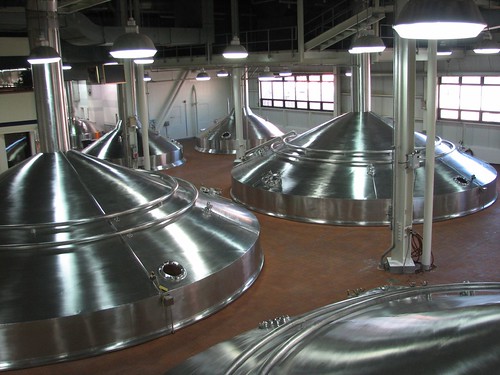
The tour ended in the bar, where we got to sample our choice of Anheuser-Busch beers. Brian had the Budweiser American Ale and the Michelob Porter, and both were surprisingly good! Anheuser-Busch isn’t just Budweiser – they actually make good beers! This was a major discovery for a microbrew lover.
After the tour, Sarah got her picture taken with a life-size Clydesdale figure.
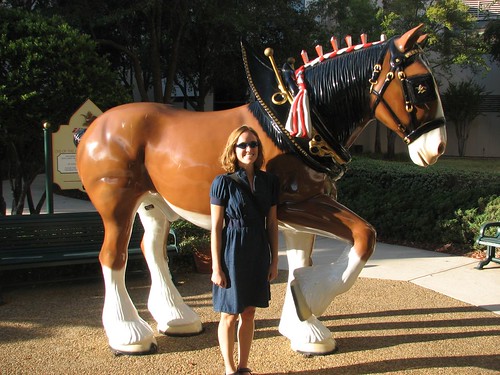
No comments:
Post a Comment